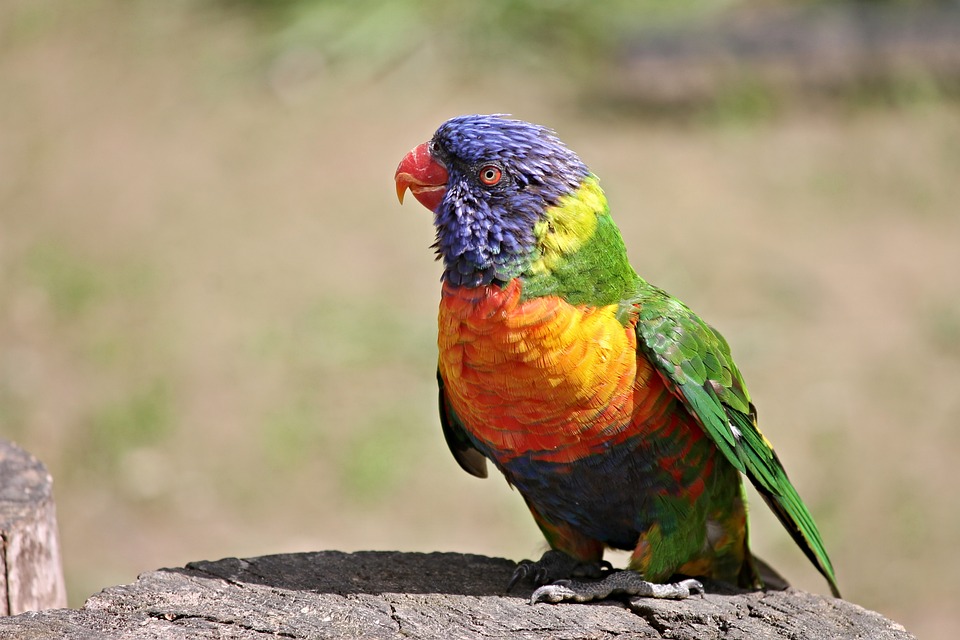Discouraging Excessive Territorial Displays in Parrots Towards Visitors
Introduction:
Parrots are intelligent and social creatures, but they can sometimes exhibit territorial behavior when visitors come into their environment. This behavior, if left unchecked, can become a nuisance and potentially escalate into aggression. In this article, we will explore effective strategies to discourage excessive territorial displays in parrots towards visitors, promoting a harmonious and welcoming environment for everyone involved.
Understanding Territorial Displays in Parrots:
1. What are territorial displays?
Territorial displays are behaviors exhibited by parrots to assert their dominance and protect their perceived territory. These displays can include vocalizations, physical movements, and aggressive behaviors.
2. Why do parrots exhibit territorial behavior towards visitors?
Parrots are naturally protective of their space and resources. When visitors enter their environment, they may perceive them as intruders and feel the need to defend their territory.
3. How can territorial displays impact the well-being of parrots and visitors?
Excessive territorial displays can cause stress and anxiety for both parrots and visitors. Parrots may become frustrated or agitated, leading to aggressive behaviors such as biting. Visitors may feel uncomfortable or even scared, affecting their overall experience.
Recognizing Signs of Excessive Territorial Displays:
1. Vocalizations and screams
Parrots may vocalize loudly or scream when they feel threatened or want to establish dominance.
2. Wing-flapping and charging
Flapping their wings aggressively and charging towards visitors are physical displays of dominance and territoriality.
3. Puffed-up feathers and raised crest
When parrots puff up their feathers and raise their crests, it is a sign of heightened arousal and territorial defense.
4. Biting and aggression
Excessive territorial displays can escalate into biting and aggressive behaviors towards visitors, posing a safety risk.
Creating a Positive Environment:
1. Proper socialization and exposure to visitors
Introduce your parrot to various visitors early on, allowing them to become familiar with different people and reduce territorial responses.
2. Gradual introduction to new people
When introducing new visitors, start with brief and supervised interactions, gradually increasing the duration over time to help your parrot adjust.
3. Encouraging positive associations
Reward your parrot with treats or praise when they exhibit calm and accepting behavior towards visitors. This positive reinforcement will help them associate visitors with positive experiences.
Training and Behavioral Reinforcement:
1. Positive reinforcement techniques
Reward desirable behaviors, such as staying calm or interacting calmly with visitors, with treats, praise, or favorite toys. This will reinforce positive behavior and discourage territorial displays.
2. Target training to redirect behavior
Use target training to redirect your parrot’s focus away from territorial displays. Teach them to touch a target stick on command, rewarding them for following the command instead of engaging in territorial behavior.
3. Utilizing clicker training
Clicker training can be effective in shaping the behavior of parrots. By pairing a distinct click sound with rewards, you can reinforce desirable behavior and discourage territorial displays.
Providing a Safe Retreat Space:
1. Designating a secure area for the parrot
Create a designated area where your parrot can retreat to when they feel overwhelmed or territorial. This space should be secure and comfortable, providing a sense of safety.
2. Ensuring adequate toys and enrichment
Provide your parrot with plenty of toys and enrichment activities to keep them mentally stimulated and engaged. This can help redirect their focus away from territorial displays.
3. Creating a calm and relaxing environment
Maintain a calm and soothing environment for your parrot. Avoid loud noises or sudden disruptions that can trigger territorial responses.
FAQs:
1. Can all parrot species exhibit territorial behavior?
Yes, territorial behavior can be exhibited by various parrot species, although the intensity and specific behaviors may vary.
2. Is it possible to completely eliminate territorial displays in parrots?
While it may not be possible to completely eliminate territorial displays, with consistent training and reinforcement, you can significantly reduce their frequency and intensity.
3. How long does it take to train a parrot to be more accepting of visitors?
The time it takes to train a parrot to be more accepting of visitors can vary depending on the individual parrot and their previous experiences. It may take weeks or even months of consistent training to see significant improvements.
4. Are there any specific techniques that work well for discouraging territorial behavior?
Positive reinforcement, target training, and clicker training are effective techniques for discouraging territorial behavior in parrots.
5. Should I consult a professional if my parrot’s territorial displays become aggressive?
If your parrot’s territorial displays escalate into aggressive behaviors, it is advisable to consult a professional avian behaviorist or veterinarian. They can provide guidance and help address any underlying issues causing the aggression.
Conclusion:
By understanding the underlying causes of territorial displays in parrots and implementing effective strategies, we can create a more harmonious environment for both our feathered friends and visitors. Patience, consistency, and positive reinforcement are key when working towards discouraging excessive territorial displays. Remember, seeking professional advice is always a good option if you encounter challenges or concerns along the way.









